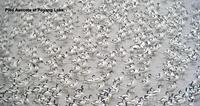schina
Days 6-8:
It shouldn't take us long to reach the world-renowned Poyang Hu. We’ll spend three full days exploring areas in this fabulous reserve. Poyang Hu is subject to huge annual fluctuations in its water level with the lake covering up to 5500 square kilometres during the summer rainy season (during which time it is then the largest lake in China) but water levels subsequently drop, and they can fall by as much as 15 metres by the end of the winter dry season, resulting in the lake shrinking to an area of less than 10% of its largest size. These massive fluctuations create a mosaic of shallow, residual lakes, and it’s the combination of these and the region’s fairly mild winters that creates ideal conditions for tens, or even hundreds of thousands of waterbirds. Poyang Hu is widely regarded as one of the most important wetlands in the world and holds the planet’s largest concentrations of a number of severely endangered species. Siberian Crane is undoubtedly the reserve’s star attraction and over 95% of the world population (4000 birds) of these magnificent creatures winter here, as do even larger numbers of the equally majestic White-naped Crane. Hooded Crane is decidedly scarcer but we expect to encounter a number of them among the huge flocks of bugling cranes that we’re sure to encounter.
One of the best ways to explore this huge wetland reserve is by boat and we’ll make extensive use of these during our stay. The ancient Chinese tradition of cormorant-fishing is still widely practiced at Poyang Hu and we might even be lucky enough to see groups of these busy, tethered birds.
Thousands of Tundra Swans, ‘Tundra’ Bean, Greater White-fronted and Swan Geese, hundreds of Oriental Storks and huge swirling flocks of Spotted Redshank and Pied Avocets also spend the winter at Poyang Hu, while other less conspicuous species include Japanese Swamp Warbler and, with a great deal luck, Swinhoe’s Crake. Nights at Yongxiu, a small town just outside the reserve.
Days 9:
Leaving Yongxiu early we'll drive south, through Nanchang and spend the morning exploring Nanjishan Reserve to the south of the city. Japanese Swamp Warbler and even Swinhoe's Crake are more regular here than at Poyang Hu and we'll concentrate out attentions on these two species in particular. In the afternoon we'll return to Nanchang airport and fly back to Shanghai. We'll then start our journey north towards Yancheng Nature Reserve stopping for the night at Jiangyin on the southern bank of the Yangtze, China's largest and arguably most important river.
|

